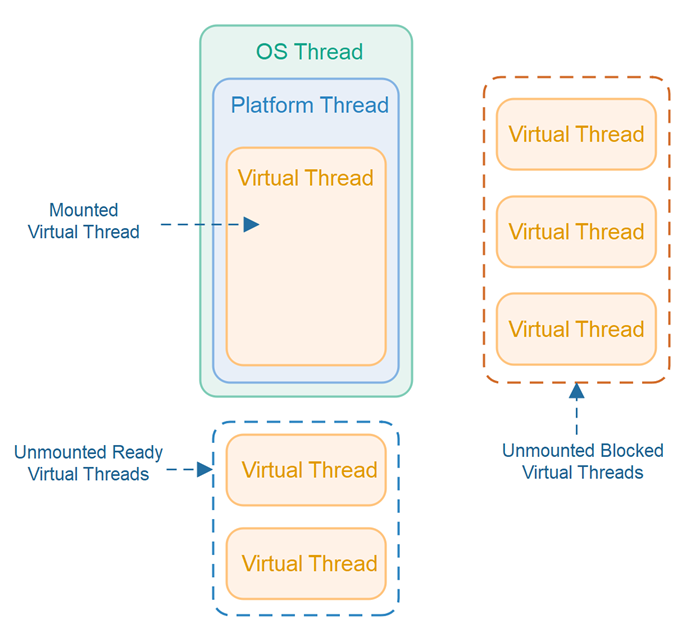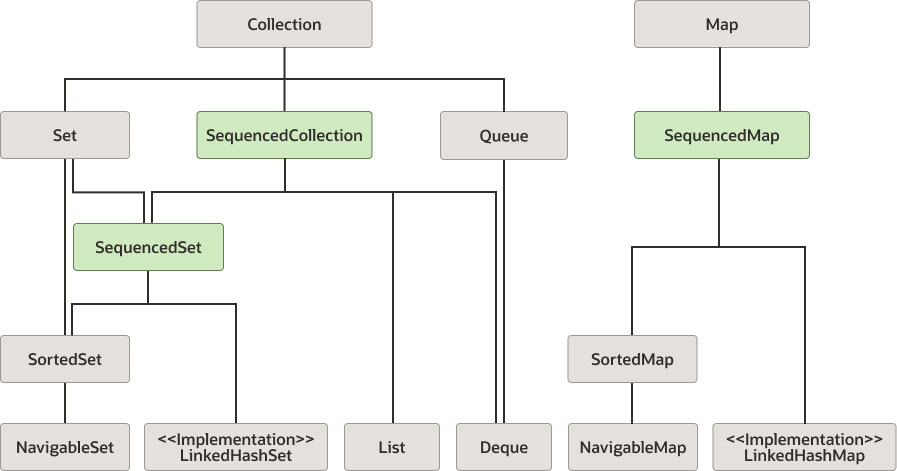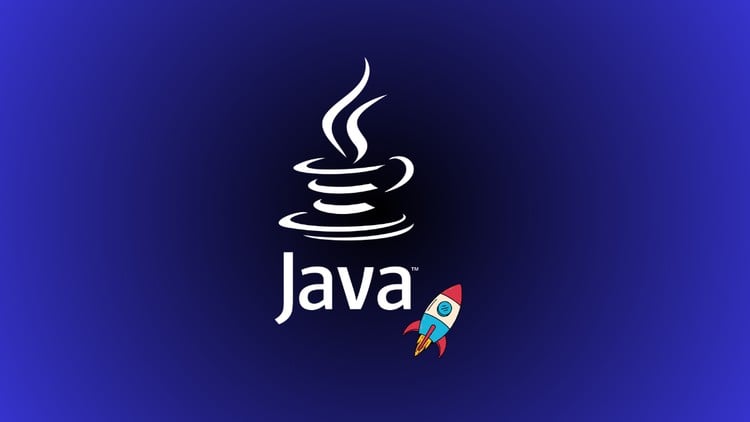The release of Java 21 marks another Long-Term Support (LTS) milestone, bringing a wealth of finalized features and exciting previews that promise to reshape how developers write concurrent, efficient, and readable code. Following in the footsteps of influential releases like Java 8, 11, and 17, Java 21 is not just an incremental update; it’s a paradigm shift. The culmination of years of research and development, particularly from projects like Project Loom, is now available to the masses, and the entire Java ecosystem is buzzing with this latest Java 21 news.
This release solidifies Java’s position as a top-tier platform for building high-throughput, scalable applications for the modern cloud era. From the game-changing introduction of Virtual Threads to the elegant simplicity of Sequenced Collections and the safety of String Templates, Java 21 offers something for every developer. This article provides a comprehensive technical exploration of the most impactful features, complete with practical code examples, best practices, and insights into how the broader Java ecosystem, including Spring, Jakarta EE, and various JVM distributions like Amazon Corretto and Azul Zulu, is adapting to this new landscape.
The Concurrency Revolution: Virtual Threads (Project Loom)
For years, Java’s concurrency model has been built upon platform threads, which are thin wrappers around operating system (OS) threads. While powerful, OS threads are a finite and heavyweight resource. Creating thousands of them can lead to significant memory overhead and performance degradation due to context switching. This limitation gave rise to asynchronous, reactive programming models (part of the long-running Reactive Java news) which, while effective, often lead to more complex, harder-to-debug code (often referred to as “callback hell”).
The most celebrated feature in the latest Java SE news is undoubtedly Virtual Threads, the flagship feature of Project Loom. Virtual threads are lightweight threads managed by the Java Virtual Machine (JVM) rather than the OS. Millions of virtual threads can be run on a small number of platform threads, dramatically increasing the scalability of concurrent applications.
From Platform Threads to Virtual Threads
The key innovation is that when a virtual thread executes a blocking I/O operation (like a network call or a database query), the JVM suspends it and allows the underlying platform thread (the “carrier” thread) to run a different virtual thread. This is done without blocking the OS thread, enabling massive throughput. This allows developers to return to a simple, sequential, thread-per-request programming style that is easy to write, read, and debug, but with the scalability of an asynchronous system.
Let’s see how simple it is to create and run tasks with virtual threads. The following example demonstrates starting 100,000 tasks, each sleeping for a second. Attempting this with platform threads would likely crash your machine, but with virtual threads, it’s trivial.
import java.time.Duration;
import java.util.stream.IntStream;
public class VirtualThreadsDemo {
public static void main(String[] args) throws InterruptedException {
System.out.println("Starting platform thread demo...");
// This would be very resource-intensive and slow with platform threads.
// try (var executor = Executors.newFixedThreadPool(200)) { ... }
System.out.println("Starting virtual thread demo...");
// The new way: an ExecutorService that creates a new virtual thread for each task.
try (var executor = java.util.concurrent.Executors.newVirtualThreadPerTaskExecutor()) {
IntStream.range(0, 100_000).forEach(i -> {
executor.submit(() -> {
try {
Thread.sleep(Duration.ofSeconds(1));
} catch (InterruptedException e) {
Thread.currentThread().interrupt();
}
if (i % 10_000 == 0) {
System.out.println("Task " + i + " completed on thread: " + Thread.currentThread());
}
});
});
} // executor.close() is called automatically, which waits for all tasks to complete.
System.out.println("All virtual threads completed.");
}
}This code showcases the core of the Java virtual threads news. The `newVirtualThreadPerTaskExecutor()` creates a new virtual thread for each submitted task, providing near-infinite scalability for I/O-bound workloads. This is a huge piece of Java performance news for server-side applications.
Bringing Order to Concurrency: Structured Concurrency (Preview)

While virtual threads solve the “how many” problem of concurrency, Structured Concurrency (a preview feature in Java 21) addresses the “how to manage” problem. Traditional concurrency models using futures and thread pools often result in code where the lifecycle of concurrent tasks is detached from the syntactic structure of the code. This can lead to issues like thread leaks, difficult error handling, and complex cancellation logic.
Structured Concurrency introduces the `StructuredTaskScope` API, which treats a group of related concurrent tasks running in different threads as a single unit of work. The lifetime of the concurrent operations is confined to a specific lexical scope in your code, simplifying error handling and cancellation.
A Practical Example: Fetching User Data
Imagine a service that needs to fetch a user’s profile and their latest orders from two different microservices simultaneously. With `StructuredTaskScope`, this becomes incredibly clear and robust.
import java.util.concurrent.StructuredTaskScope;
import java.util.function.Supplier;
public class StructuredConcurrencyDemo {
// Mock record for user data
record UserProfile(String id, String name) {}
record UserOrders(String id, int orderCount) {}
record UserData(UserProfile profile, UserOrders orders) {}
public UserData fetchUserData(String userId) throws InterruptedException {
// Create a scope that shuts down on the first failure.
try (var scope = new StructuredTaskScope.ShutdownOnFailure()) {
// Fork two concurrent tasks. These will run on virtual threads by default.
Supplier<UserProfile> profileFuture = scope.fork(() -> fetchUserProfile(userId));
Supplier<UserOrders> ordersFuture = scope.fork(() -> fetchUserOrders(userId));
// Wait for both tasks to complete or for one to fail.
scope.join();
scope.throwIfFailed(); // Throws an exception if any task failed.
// If we reach here, both tasks succeeded.
return new UserData(profileFuture.get(), ordersFuture.get());
}
}
// Mock service methods that simulate network calls
private UserProfile fetchUserProfile(String userId) throws InterruptedException {
System.out.println("Fetching profile for user: " + userId);
Thread.sleep(200); // Simulate I/O latency
return new UserProfile(userId, "Jane Doe");
}
private UserOrders fetchUserOrders(String userId) throws InterruptedException {
System.out.println("Fetching orders for user: " + userId);
Thread.sleep(300); // Simulate I/O latency
return new UserOrders(userId, 42);
}
}In this example, the `try-with-resources` block defines the scope. `scope.fork()` starts new tasks. `scope.join()` waits for them to complete, and `scope.throwIfFailed()` elegantly handles any exceptions from the subtasks. If `fetchUserProfile` fails, `fetchUserOrders` is automatically cancelled if it’s still running. This is a significant improvement in managing concurrent operations and a key part of the ongoing Java concurrency news.
Language and Collection Enhancements
Java 21 isn’t just about concurrency. It also delivers significant quality-of-life improvements to the core libraries and language syntax, making everyday coding tasks more intuitive and less verbose.
Sequenced Collections: A New Order
A long-standing minor annoyance in the Java Collections Framework was the lack of a common interface for collections with a defined, predictable encounter order. For example, both `List` and `LinkedHashSet` are ordered, but you couldn’t rely on a shared type to get the first or last element. Java 21 introduces the `SequencedCollection` interface to solve this.
This new interface is retrofitted into the existing collection hierarchy, implemented by `List`, `Deque`, `LinkedHashSet`, and `SortedSet`. It provides useful methods like `getFirst()`, `getLast()`, `addFirst()`, `addLast()`, and `reversed()`.

import java.util.ArrayList;
import java.util.LinkedHashSet;
import java.util.List;
import java.util.SequencedCollection;
import java.util.Set;
public class SequencedCollectionsDemo {
public static void main(String[] args) {
// Example with a List
List<String> arrayList = new ArrayList<>(List.of("First", "Second", "Third"));
printSequencedCollectionInfo(arrayList);
// Example with a LinkedHashSet (maintains insertion order)
Set<String> linkedHashSet = new LinkedHashSet<>(Set.of("Apple", "Banana", "Cherry"));
printSequencedCollectionInfo(linkedHashSet);
}
public static void printSequencedCollectionInfo(SequencedCollection<String> collection) {
System.out.println("\n--- Processing Collection of type: " + collection.getClass().getSimpleName() + " ---");
System.out.println("Original Collection: " + collection);
System.out.println("First Element: " + collection.getFirst());
System.out.println("Last Element: " + collection.getLast());
// The reversed() method provides a reversed-order view of the collection.
System.out.println("Reversed View: " + collection.reversed());
// The original collection is not modified.
System.out.println("Original Collection (unchanged): " + collection);
}
}This seemingly small addition greatly improves the expressiveness of code that deals with ordered collections, providing a unified and predictable API.
String Templates (Preview)
Another powerful preview feature is String Templates. It aims to simplify string formatting and concatenation while improving security. It combines literal text with embedded expressions, processed by a template processor. The standard `STR` processor provides straightforward interpolation.
public class StringTemplatesDemo {
public static void main(String[] args) {
String name = "Alice";
int score = 95;
// The new way with the STR template processor
String greeting = STR."Hello, \{name}! Your score is \{score}.";
System.out.println(greeting); // Output: Hello, Alice! Your score is 95.
// It can also handle more complex expressions
String json = STR."""
{
"name": "\{name}",
"score": \{score},
"isPassing": \{score > 50 ? "true" : "false"}
}
""";
System.out.println(json);
}
}While `String.format()` and simple concatenation exist, String Templates are more readable and, crucially, safer. Custom processors can be written to validate or sanitize embedded expressions, which is a big win for Java security news, helping to prevent injection attacks when constructing queries or scripts.
Best Practices, Performance, and the Broader Ecosystem
Adopting new features requires understanding how to use them effectively. Here are some Java wisdom tips news for integrating Java 21’s capabilities into your projects.

Best Practices for Virtual Threads
- Do Not Pool Virtual Threads: The very idea of virtual threads is that they are cheap to create and discard. Pooling them is an anti-pattern that negates their benefits. Use `Executors.newVirtualThreadPerTaskExecutor()` to get a new thread for each task.
- Beware of Pinning: A virtual thread is “pinned” to its carrier platform thread when it executes code inside a `synchronized` block or a native method (JNI). While pinned, the carrier thread cannot run other virtual threads, which can create a bottleneck. Prefer `java.util.concurrent.locks.ReentrantLock` over `synchronized` in high-contention scenarios.
- Update Your Dependencies: Ensure your libraries and frameworks are compatible with virtual threads. The Spring Boot news is particularly relevant here, as Spring Boot 3.2+ offers first-class support for virtual threads with a simple configuration property (`spring.threads.virtual.enabled=true`). Similarly, the Jakarta EE news indicates that future versions will embrace this concurrency model.
Ecosystem and Tooling
The entire Java ecosystem news is rapidly aligning with Java 21.
- Build Tools: Both Maven (via `maven-compiler-plugin`) and Gradle now fully support compiling and running projects with Java 21. Ensure you update your `source` and `target` versions in your `pom.xml` or `build.gradle` file.
- Frameworks: As mentioned, Spring Boot is leading the charge. Other frameworks like Quarkus and Helidon are also providing excellent support for virtual threads. For data access, the latest Hibernate news confirms compatibility, and JDBC drivers are being updated to work seamlessly in a virtual thread environment.
- Testing: The latest JUnit news and Mockito news confirm that these essential testing libraries work perfectly with Java 21, allowing you to test your new concurrent code with familiar tools.
- JVM Distributions: Java 21 is available from all major vendors, including Oracle Java, OpenJDK, and popular builds like Amazon Corretto news, Adoptium Temurin, and Azul Zulu, ensuring you can deploy on your platform of choice.
Conclusion: A New Chapter for Java
Java 21 is a landmark LTS release that delivers on the long-awaited promises of Project Loom. Virtual Threads and Structured Concurrency fundamentally change the game for high-throughput applications, making scalable, concurrent code simple to write and maintain once again. The “thread-per-request” model is back, but this time with the efficiency and scale required for modern microservices and cloud-native workloads.
Beyond concurrency, quality-of-life improvements like Sequenced Collections and the forward-looking String Templates demonstrate a continued commitment to developer productivity and code clarity. As the ecosystem, from Spring to Maven to the various OpenJDK providers, fully embraces these features, now is the perfect time to upgrade. Start by experimenting with virtual threads in I/O-bound sections of your application and explore how Sequenced Collections can simplify your data manipulation logic. Java 21 is not just an update; it’s an invitation to build the next generation of resilient, scalable, and maintainable systems on the JVM.

